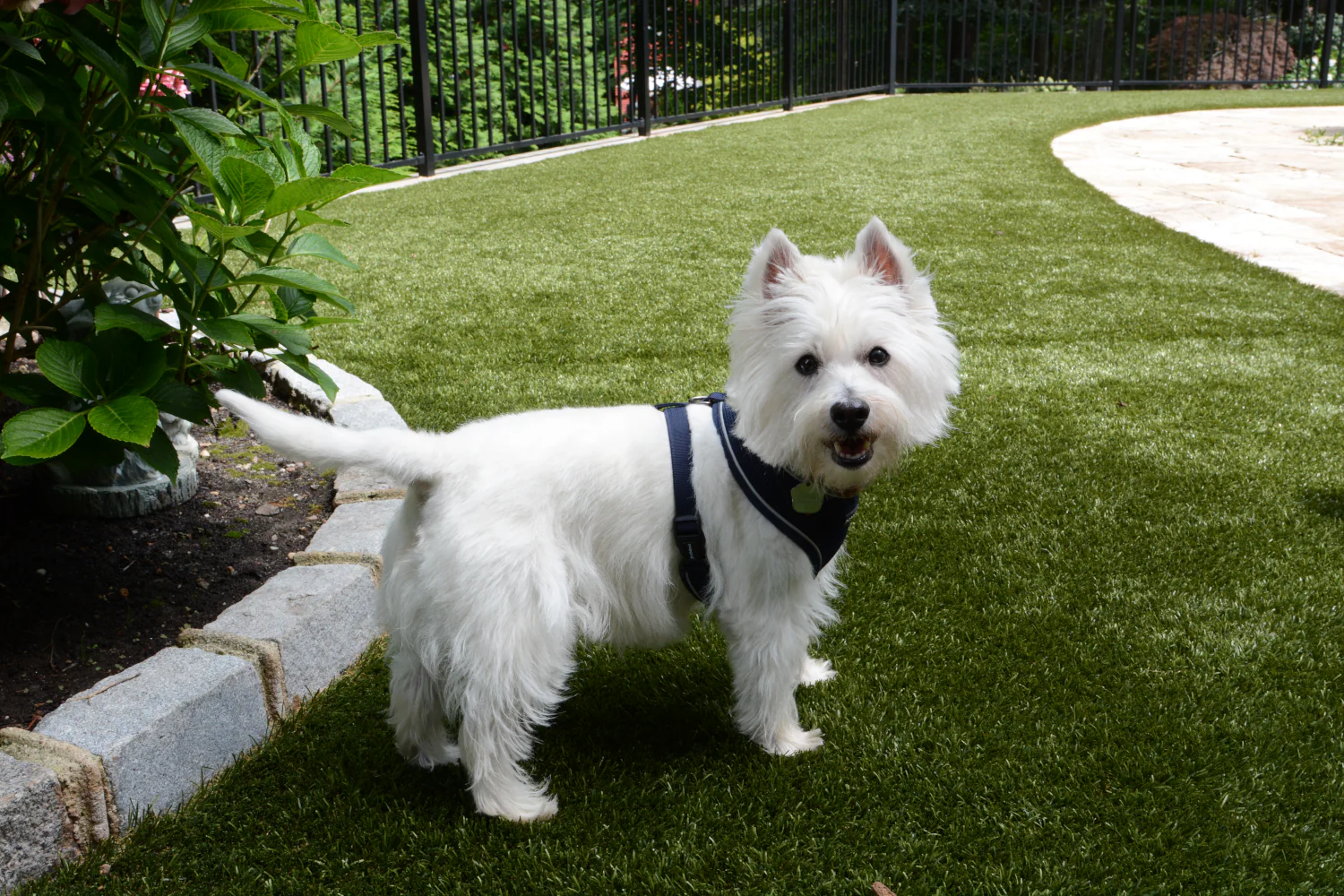How to Avoid Pet Turf Mistakes

You installed artificial grass for the easy care and neat appearance — wise decision. But pets change the equation. Here’s a straightforward breakdown of the most common problems that happen to fake grass for dogs and exactly what to do about each of them, step by step.
1. NOT PICKING UP DOG POOP
What happens: A dog poop left behind dries, sticks, or soaks into the infill.
Why it matters: Dried messes can trap bacteria and cause lasting marks.
Fast fix: Pick up and dispose as soon as you can. If residue remains, use a soft brush and a spray with water to lift it out.
Habit to build: Keep a small scoop and covered container near the yard for quick cleanups.
2. DOG PEE PATCHES
What happens: Dogs favor a few spots and urine collects.
Why it matters: Strong odor and damaged infill may follow.
Fast fix: Rinse with a hose every once in a while to prevent buildup, especially if rain is lacking. For stubborn smells, a pet enzyme cleaner made for artificial turf might be necessary when using regular sand infill. Using SWG/Shaw exclusive K9 sand eliminates all dog urine or ammonia smells.
Preventive move: Rotate play zones or set toys to spread traffic around.
3. DIGGING, CHEWING, AND NAIL DAMAGE
What happens: Dogs paw at the ground, chew edges, or their nails snag seams.
Why it matters: Holes, loose edges, and pulled fibers wear it out early and cause hazards.
Fix: Trim nails regularly and fix raised seams with landscaping stakes or approved bonding adhesive.
Prevention: Give dogs a single digging spot and provide dog bones.
4. WATER DRAINAGE ISSUES
What happens: Water pools after storms or heavy use.
Why it matters: Pooled water can promote mold and make turf soggy.
Fast fix: Clean out debris from drains. Lightly lift turf edges near drains to check for blockages.
When to call a pro: If the same spot stays wet repeatedly, the base may need regrading.
5. MATTED OR FLATTENED FIBERS
What happens: Busy play areas start to look worn out and flat.
Why it matters: Compressed infill traps dirt and debris and makes turf harder.
Fast fix: Lift blades with a soft-bristle broom.
Routine: Brush busy play spots once a month to keep the turf upright.
6. USING THE WRONG CLEANING PRODUCTS
What happens: Strong chemicals damage the backing and fibers.
Why it matters: Faded turf, damaged seams, and reduced turf life.
Fast fix: Rinse affected areas thoroughly and use pet-safe gentler turf cleaners. A diluted vinegar solution works for many smell problems.
Note: Avoid solvent-based products and stiff brushes.
QUICK CARE CHECKLIST
- Scoop solids within a few hours
- Flush urine spots at least once a week
- Brush high-use turf areas monthly
- Place snacks on a mat
- Choose pet-safe products for synthetic turf
- Check drainage after heavy storms
NEED A DEEP PROFESSIONAL CLEANING
Simple routines keep your artificial turf for dogs smelling fresh and appearing well-kept. If you need help — from a deep clean to checking drainage or refreshing infill — Southwest Greens can do the hard work so your yard stays pet-friendly and guest-ready. Reach out, and we’ll create a care plan for your turf.
